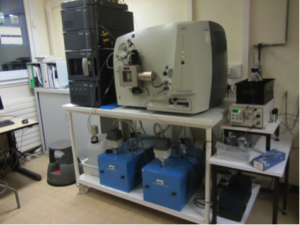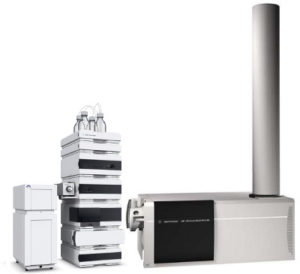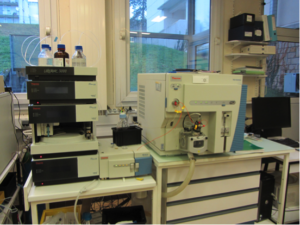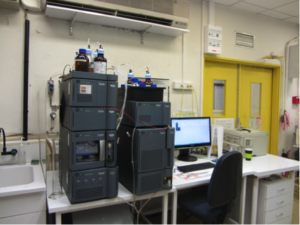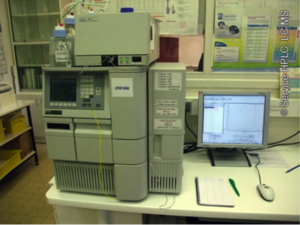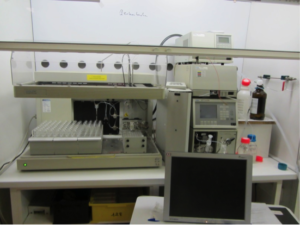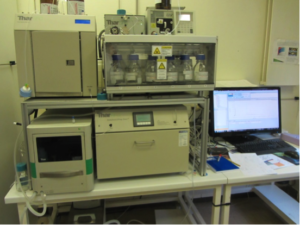Thanks to the diversity of its equipment and the variety of its stationary phases, many applications are possible in the fields of chemistry, biochemistry or biology for the separation, purification, dosage and identification of molecules in complex mixtures.
Mass measurements (unit and high resolution)
This instrument operates 24 hours a day and provides high-resolution MS and LC/MS analyses. The ionization mode used is ESI.
Manager:
Nathalie Hue (+33 1 69 82 30 98)
Platform engineers:
Nicolas Elie (+33 1 69 82 30 16)
Vincent Guérineau (+33 1 69 82 30 16)
Vincent Steinmetz (+33 1 69 82 30 67)
When compounds do not ionize in ESI, it is possible to try other techniques such as APCI, APPI and MALDI on the instruments present in the mass spectrometry research team led by D. Touboul
The Q-TOF Agilent can be coupled with supercritical mode chromatography (SFC) or HPLC with APCI or APPI ionization (well suited for apolar compounds).
LC/MS coupling, Quantification
The U-HPLC system (Ultimate 3000), provides higher resolution and chromatographic sensitivity as well as increased analysis speed through the use of particles smaller than 2 µm. Coupled with a triple quadrupole mass spectrometer (TQ-Vantage), this very powerful analytical chain is designed for fast U-HPLC/MS, U-HPLC/MS/MS analyses and assays.
The ACQUITY Waters (UPLC) system is designed for fast and complete analysis. Coupled with a UV detector, a DEDL detector and a triple quadrupole mass spectrometer (TQD), this analytical chain accessible to the institute’s researchers is versatile (analyses, assays, purity control…)
The light scattering detector allows to visualize compounds that do not have absorbent chromophores in the UV. The fluorescence detector provides a high level of selectivity and sensitivity. The single quadrupole mass detector gives access to the unit masses of the compounds (ESI, APCI).
HPLC
The acquisition of chiral columns of different types (AD-H, IA, IB, IC, ID, IE, IF, Whelk), connected in parallel and linked to a 6-way selection channel, allows to quickly find the optimal conditions for separating the enantiomers, leading in a short time to the calculation of enantiomeric excess essential to the chemist.
Purification
Purification by column chromatography with a diameter of 20 mm (up to 1g of product to be purified) depending on the complexity of the mixture.
This hybrid device allows both analytical studies and purifications by supercritical chromatography (CO2). The purification of enantiomers is also possible.


